6 Best Plank Alternatives (with Pictures!)
Apart from the plank, one can perform variations such as the side plank, or otherwise pick similar movements that also involve the core stabilizing the body in an unstable position.
A few good examples are the boat pose of yoga, the calisthenics classic hollow body hold and even leg raises performed as a hold.
What are Planks and Why Alternate Them Out?
Planks are a core isolation exercise revolving around isometric contraction of the abdominal and oblique muscles. They are most often performed for improving abdominal endurance and overall core stability as an accessory exercise.

Despite their popularity, planks are not the only type of exercise that achieves these goals - nor are they the best one, in certain respects.
Planks are time-consuming, tend to favor the anterior trunk stabilizers over the posterior ones, and tend to become limited once the exerciser is over a certain level of abdominal strength.
All these factors add up to needing a progression exercise - or otherwise an alternative that better meets the needs of the exerciser.
Alternatives to the Plank
1. Leg Raise Holds
The leg raise hold is a similar core isolation exercise primarily involving static contraction of the core muscles - particularly those of the lower abdominals.
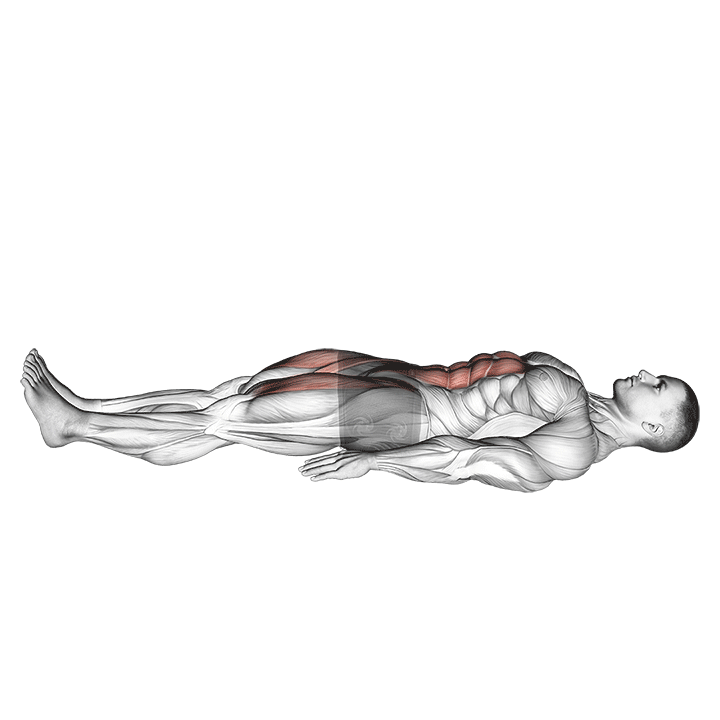
Leg raise holds involve the exerciser lying flat on their back and raising their fully extended legs up into the air. This position is held for a predetermined length of time with each set, maximizing development of the lower anterior core muscles.
Like planks, the leg raise hold requires no equipment whatsoever and is considered entirely suitable for the average healthy adult.
Benefits as a Plank Alternative
The main benefit to substituting out planks with leg raise holds is greater specificity.
Rather than targeting the entire core in a table position, the upper abs are worked to a somewhat lesser degree than the lower abs as they must work harder to stabilize the legs.
In addition, leg raise holds can act as an entry to similar isometric core exercises like V-ups, the bear pose or even hanging leg raises.
Sets and Time Recommendation
Because leg raise holds are somewhat less taxing than planks, we recommend 2-3 sets of +5-10 seconds on your plank maximum.
How-to
To perform a repetition of leg raise holds, the exerciser will lie flat on their back with their arms stretched alongside the body for support. The lower back should be flush against the floor by pulling the navel towards the spine - so to speak.

Supporting the head or otherwise keeping it against the floor, the exerciser then straightens their knees and braces their abdominal muscles, raising their legs into the air until it is at a 45 degree angle.
In this position, the exerciser then simply holds for a predetermined length of time.
2. Side Planks
Side planks are a variation of plank where the exerciser props themselves up with one arm and on the side of one leg. This shifts the emphasis towards muscles other than the abdominals and creates a more unilateral (one-sided) training stimulus, requiring that the exerciser balance it out on both sides.

Side planks are more often performed by athletes requiring greater core stability in rotation or lateral bending movements, such as shot putters, javelin throwing or in many martial arts.
Much like conventional planks, the side plank is entirely a bodyweight exercise and requires no equipment to perform. However, unlike its bilateral cousin, the side plank is far easier to load as one arm is left free to grip weights against the torso if needed.
Benefits as a Plank Alternative
Side planks create a greater emphasis on the oblique muscles - of which are vital for overall trunk stability and rotational movement at the waist.
In addition, their unilateral nature allows for the correction of bilateral imbalances of the core musculature. Of course, remember to first speak to a professional prior to attempting to correct a muscular imbalance yourself.
Sets and Time Recommendation
Side planks are somewhat more difficult than conventional planks. Try 2-3 sets of 25-30 seconds as a starting workout.
How-to
To perform a side plank, the exerciser will lie on one side of their body with the elbow beneath their torso and their legs stacked atop each other.

Keeping the head aligned with the spine and the spine itself neutral, the exerciser then squeezes their core and glutes - lifting their hips off the floor and forming a straight diagonal line with their entire body.
In this position, the exerciser will continue to contract their core for as long as the set is meant to last.
3. Plank Jacks
Plank jacks are another variation of plank involving the exerciser spreading and narrowing their legs over the course of a regular plank. This greatly enhances contraction of the lower abdominal muscles, and lends a dynamic component to an otherwise entirely static movement.
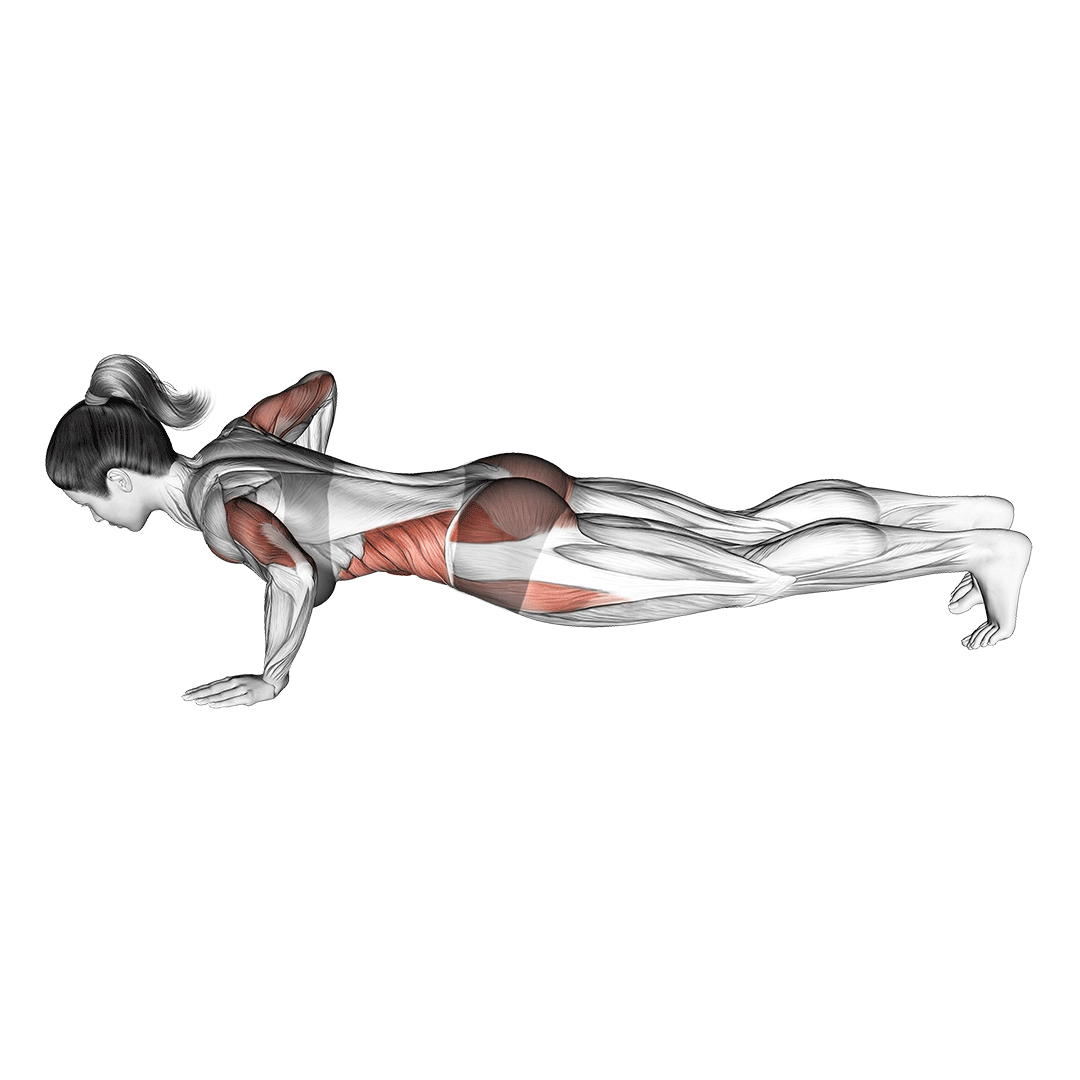
Plank jacks are considered to be more difficult and complex than conventional planks, allowing them to be used as a progression or even as a direct substitute in cases where isometric contraction alone is too easy.
Benefits as a Plank Alternative
As mentioned, plank jacks feature a dynamic component, rather than solely the static hold that is a regular plank. Dynamic contraction allows for more calories to be burned, greater muscular hypertrophy and greater exertion - thereby saving the exerciser time.
Furthermore, plank jacks have better carryover to real life activity than the purely isometric conventional plank, and are widely used in many athletic drills.
Sets and Time Recommendation
If new to plank jacks, try 3-4 sets of 20-30 seconds at a moderate tempo.
How-to
Entering a conventional high plank stance with the hands and feet on the ground, the exerciser then braces their core, unlocks their elbows and “jacks” their feet out to the sides to wider than shoulder-width apart.

Once the feet touch down on the floor, the exerciser pauses for a moment before narrowing them back together.
Repeat this movement until enough repetitions or a sufficient length of time has passed, all the while keeping the core contracted.
4. Dead Bug Holds
Also known as the “bent hollow body” hold, dead bug holds are an isometric core exercise involving both the arms and legs being raised into the air while lying on the back.
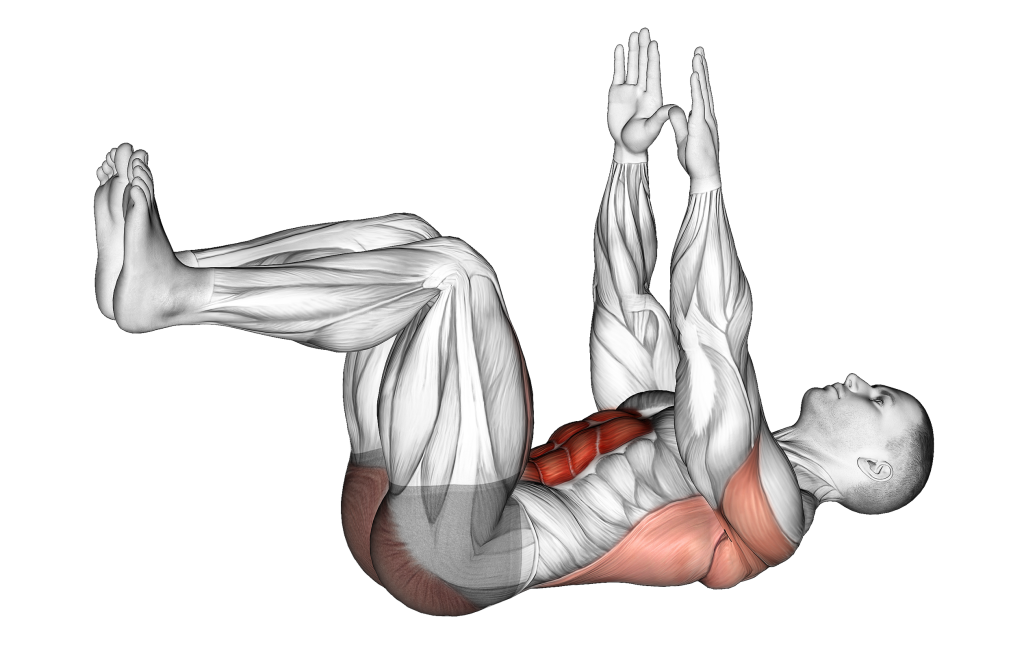
Like conventional planks, dead bug holds target the anterior trunk stabilizers in an equal and moderately intense measure. However, dead bug holds offer the advantage of greater modifiability and versatility by either extending or bending the knees and elbows for greater intensity.
Benefits as a Plank Alternative
Dead bug holds offer a more comfortable and versatile substitute to the plank - even while developing the same muscles in much the same manner.
In addition, dead bug holds carry over quite well to more advanced exercises like V-ups, dragon flags and hanging leg raises due to the similarity in their stances.
Sets and Time Recommendation
If a novice, perform 2-3 sets of 45-60 seconds each.
If more advanced, perform 2 sets of 60+ seconds with a final set held until failure.
How-to
To perform a dead bug hold, the exerciser will lie on their back with their ribcage tucked in and their navel pulled towards their spine, pressing the lower back into the floor.

Bracing the core, the exerciser then raising their arms up towards the ceiling, keeping the elbows extended. When parallel with their shoulders, the exerciser then also raises their legs at the hips, either extending at the knee or keeping them bent for an easier exercise.
With all limbs raised vertically into the air, the exerciser then continues to brace their core and hold their position until the set is complete.
The boat pose is a classic yoga core strengthening exercise involving a similar sort of static contraction to that of planks.

However, rather than being in a table pose, the boat pose requires the exerciser to form a letter “V” shape while balanced atop their glutes, legs and torso nearly vertical.
This allows for significantly greater intensity than would be possible with a conventional plank, and is excellent for improving lower back and glute mobility as well.
Benefits as a Plank Alternative
Apart from working the core harder and improving posterior chain mobility, the boat pose will fatigue the core to a considerably more rapid degree than planks - saving the exerciser time.
Furthermore, no loading of the wrists or elbows occurs while in the boat pose, allowing individuals who cannot hold a plank stance to still train their core isometrically.
In addition, unlike planks, the boat pose can be made easier or more difficult by simply pulling the legs closer to the chest. The closer the legs and torso are, the worse the stability and the greater the core must contract to maintain the pose.
Sets and Time Recommendation
When holding the boat pose, aim for 2-3 sets of 20-30 seconds - or for even longer, if you are able.
How-to
Beginning by lying on their back with the legs extended across the floor, the exerciser prepares to assume the boat pose by contracting their core, pulling their belly inwards and locking the spine into a neutral curvature.

Holding these cues, the exerciser then simultaneously raises their torso upwards and raises their extended legs towards their chest, essentially performing a sit-up and leg raise simultaneously.
The arms should also be extended forwards as this occurs, ending with the hands parallel or somewhat beyond the thighs at the top of the movement.
With the torso diagonal, the legs in the air and the arms extended across the body, the exerciser continues to hold this position until the set is complete. Remember that the movement becomes more difficult the more vertical the legs and torso are - adjust accordingly.
6. Hollow Body Holds
Hollow body holds are quite similar to the dead bug or boat pose where the core is isometrically targeted by raising the legs and arms off the floor. The hollow body hold makes itself unique by its smaller range and markedly lesser strain on the lower back.
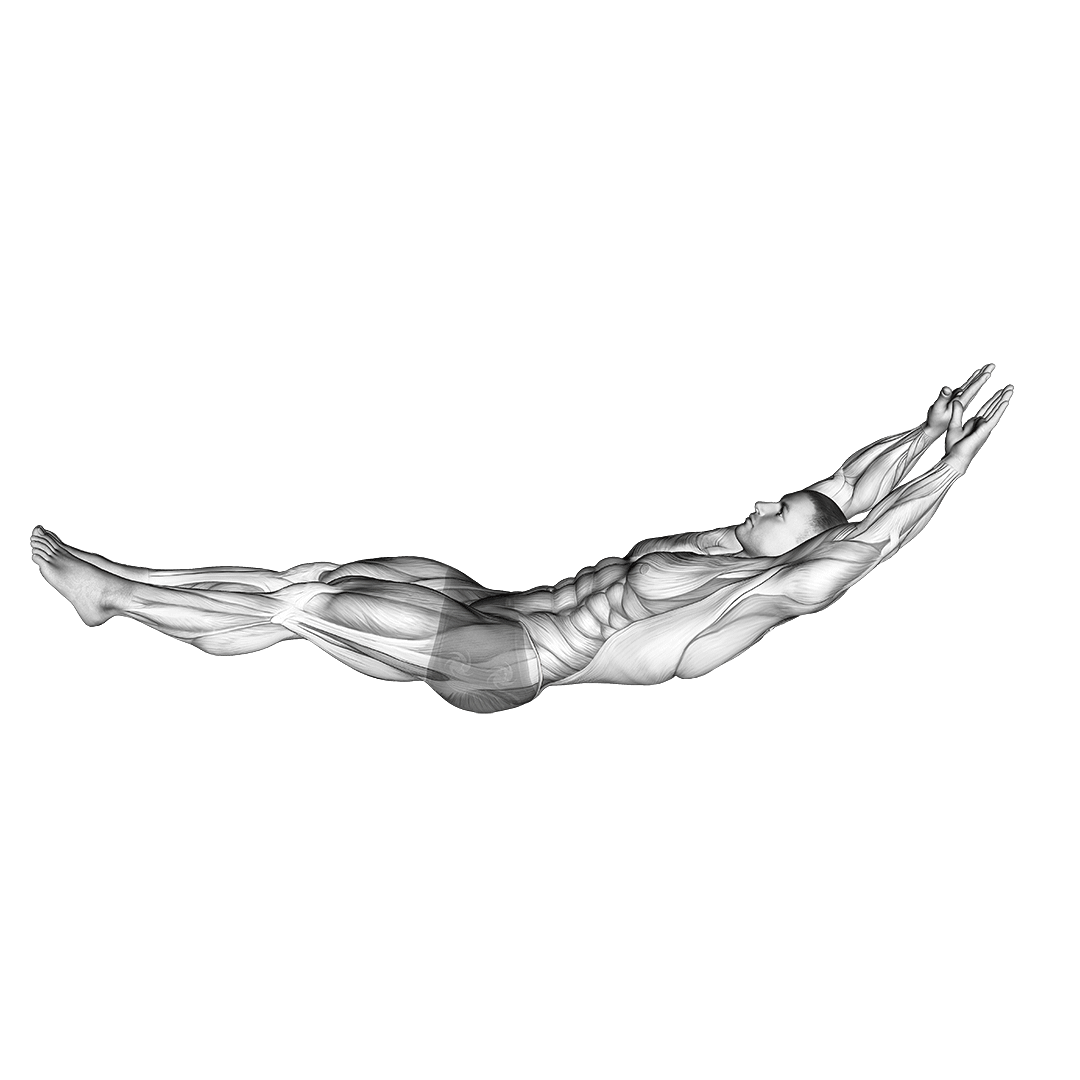
Apart from being safer and somewhat more accessible, hollow body holds are also excellent for teaching novices how to correctly contract their core, as no other aspects of the exercise distract from pure conscious core contraction.
Benefits as a Plank Alternative
As a substitute to planks, hollow body holds emphasize the inner abdominal muscles to an even greater degree while simultaneously creating no pressure on any joints whatsoever.
Furthermore, in comparison to planks, hollow body holds are far more difficult to perform incorrectly and will ensure that the cores are the main muscle contracted during training.
Sets and Time Recommendation
If new to hollow body holds, try up to 5 sets of 10-15 seconds each.
How-to
To perform a hollow body hold, the exerciser will lie flat on their back with their arms and legs extended straight horizontally off the floor.
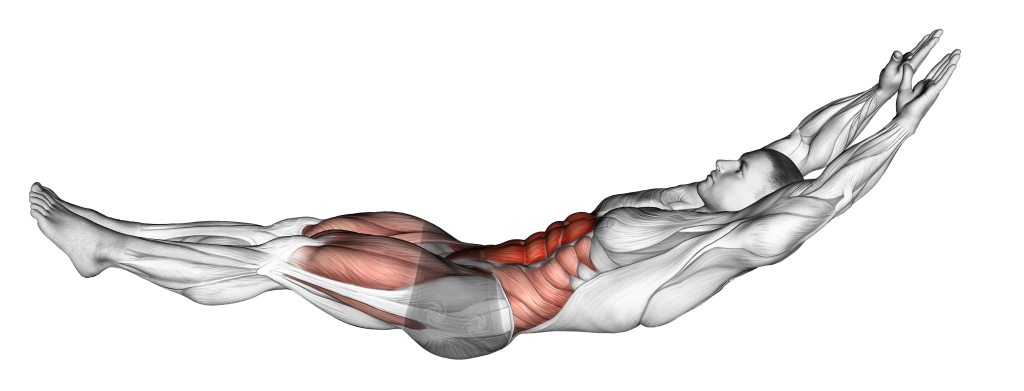
Contracting their core and pulling their navel towards the floor, the exerciser then raises their upper back and head off the ground, with the glutes and lower back being the sole parts of the body touching the floor.
Now in the hollow position, the exerciser holds this stance while continuing to press their lower back into the floor for as long as the set lasts.
Frequently Asked Questions (FAQ)
How Do You Get Abs Without Planks?
In truth, visible abdominal muscles are not directly caused by performing planks but instead by losing fat around the midsection.
As such, the question is less of how to get abs without planks but instead how to diet so that your abs are revealed, planks or not.
Aim for a caloric deficit between 200-500 every day, and perform dynamic core exercises like crunches, leg raises and Russian twists if desired.
Are Planks Bad for Your Back?
Yes - but only if poor form is followed. Learn to maintain proper back neutrality and core contraction while in a plank stance, as this will eliminate any risk of lower back strain that may be present.
Can Push-Ups Replace Planks?
Not quite.
Although both push-ups and planks are performed in similar stances, push-ups distribute far more weight to the upper push muscles, and are otherwise performed too rapidly to rival the plank in terms of core training.
If searching for an alternative to the plank, try the bear pose, hollow body holds or dead bug holds.
References
1. Huang, Z., Wang, B., Song, K. et al. Metabolic and cardiovascular responses to continuous and intermittent plank exercises. BMC Sports Sci Med Rehabil 15, 1 (2023). https://doi.org/10.1186/s13102-022-00613-z
2. Park SK, Lee KS, Heo SJ, Jee YS. Effects of High Intensity Plank Exercise on Physical Fitness and Immunocyte Function in a Middle-Aged Man: A Case Report. Medicina (Kaunas). 2021 Aug 20;57(8):845. doi: 10.3390/medicina57080845. PMID: 34441051; PMCID: PMC8399219.
3. Dong, Kuan, Tenghao Yu, and Buongo Chun. 2023. "Effects of Core Training on Sport-Specific Performance of Athletes: A Meta-Analysis of Randomized Controlled Trials" Behavioral Sciences 13, no. 2: 148. https://doi.org/10.3390/bs13020148
